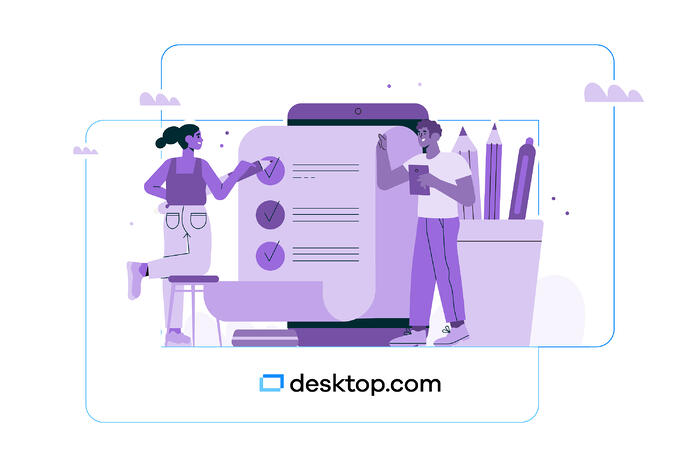What is a "hybrid work model", what are the benefits and how do you best implement it?
Since the better part of last year, in-office work has taken a backseat to allow remote work to shine. Several companies have found that remote work has actually been a sustainable work model, and many businesses and employees are even hoping to continue working this way. However, since vaccinations are starting to get distributed and cases are slowly going down, the days of remote work may soon be over for some people. Does it have to be, though?
Many individuals have discussed the option of a hybrid work model since many people enjoy working from home, or find it beneficial at the very least. But are we ready to go to a hybrid model, and how do we think it will affect businesses?

Let’s start by tackling the obvious question - what is a hybrid work model?
Essentially, a hybrid work model is the combination of in-office and remote work. With the pandemic starting to decline, some businesses and employees are suggesting a hybrid model where they switch off from going into work half of the time, with the other half spent at home. In fact, 66% of employees favor a hybrid workplace.
But why should businesses make this transition, and will it even be effective?
The great thing about remote work is that it forced businesses to invest in organization and collaborative tools to get the team together. However, with a small revert back to the office place, businesses may start to dip out of these tools in favor of saving a few dollars.
With a flexible workplace, however, this is the perfect opportunity for businesses to fully invest in these tools so that way employees, no matter where they are, are able to collaborate and function as if they were all together. Without these tools, individuals that are working remote won’t be able to communicate as effectively with their team who is in the office, which will just cause more miscommunication and stress among employees.
Tools like Desktop.com, for example, are perfect for keeping an entire team organized, regardless where they work from. Teams can collaborate through instant messaging and video conferencing, and can securely access a all important tools, links and key knowledge from a single source.
Luckily we live in the age of technology, which means even when we work remotely, teams are still able to communicate and collaborate on projects through several means.
That said, since businesses had to make the abrupt transition to remote work, digital meetings and workloads have been at an all-time high. Since remote work took off in 2020, 62% of calls and meetings have been unscheduled or conducted ad hoc, according to Microsoft.
With all of the added meetings and seemingly endless workload in a digital space, productivity could start to stall, or even dwindle in a remote environment if issues aren’t addressed properly. While a remote team, if utilized correctly, does in fact increase productivity, some businesses may see the need to at least have partial in-person meetings and a work schedule. This means finding the right tools that can connect your team and bring them together.
But how would these tools and a new work style help a business?

Now that we know a little more about the hybrid model and why it could be needed, what are some benefits to moving forward with this structure?
For one, businesses can see an increase in productivity. Remote work has already been proven to increase productivity, which has helped businesses make the shift to the work-from-home environment. However, there are some issues that employees can face when only working from home, such as feeling lonely, sluggish, or just out of sync. With a hybrid model, employees can retain their productivity of working at home, while simultaneously being able to perform some in-person meetings and collaboration to help stimulate creativity and productivity.
This can also help improve employee satisfaction, if they have the option to be able to choose when they can come in. Offering flexibility for a job allows employees to be more happy, and can even reduce staff turnover and business costs. In fact, employers could collectively save over $500 billion a year, or almost $11 thousand for each employee who works at home half of the time.
With the rise of collaboration hubs and shareable spaces, teams can easily function in-person and remotely without feeling like they are working separately.
From increased productivity to better savings, a hybrid model seems to be the future of the workspace. Of course, switching to a hybrid model will take more adjustments and planning for everyone, but once it’s perfected, people will have the option to choose how and when they work from home and in the office. Collaboration will be streamlined, and employees will be able to reap the benefits of a perfectly constructed workflow schedule.
Services like Desktop.com can help bridge the gaps in communication, collaboration and organization when the workforce is in constant movement between remote and in-house. Whether your team continues to work remotely or adopts a hybrid model, Desktop.com will be able to get your team on the same page.
Check it out today!